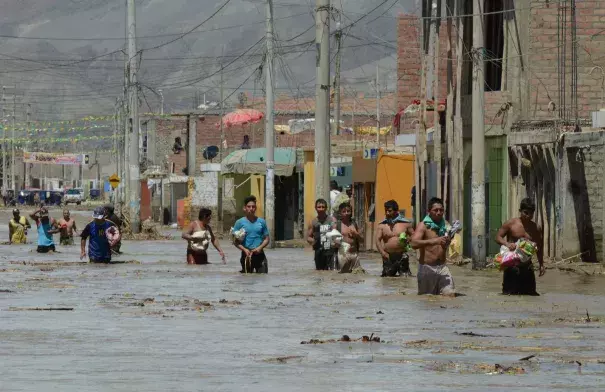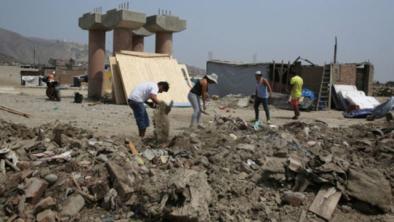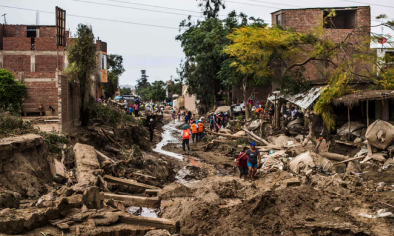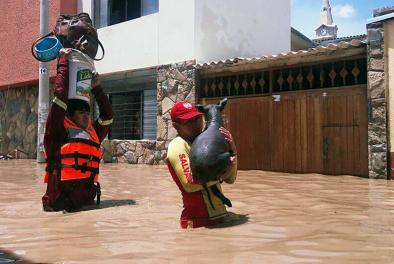Peru's floods follow climate change's deadly trend

The intense rain and flooding in Peru took emergency workers and scientists by surprise, because such extreme downpours typically are associated with a large-scale El Niño phenomenon. But the latest El Niño ended nearly a year ago.
The flooding instead has been linked to an exceptional and sudden emergence of extra-warm ocean waters just off Peru's coast, what scientists call a coastal El Niño. Since mid-March, NOAA satellites have showed this patch of the eastern Pacific as the most anomalously warm ocean region in the world.
It won't be clear whether human-caused global warming was a direct factor in the flooding unless scientists do an attribution study. That would determine how much the buildup of heat-trapping greenhouse gases increased the odds of it happening.
But the unusual flooding is consistent with the extreme weather expected as climate change warms the oceans, according to scientists.
"There's been a big increase in really heavy rainfalls around the world. Storms are moving more slowly, carrying more moisture. That's the new normal," Jim White, said director of the Institute of Arctic and Alpine Research at the University of Colorado, Boulder. "At 400 ppm of CO2 in the atmosphere, pretty much everything should be carrying a signature of climate change, it would be odd if it didn't. The question is not so much is this event caused by climate change. The question is, which event is not?"
Since the 1950s, the world's oceans have absorbed more than 90 percent of the extra heat trapped in the Earth's atmosphere as a result of the increase in greenhouse gas emissions.
"The eastern equatorial Pacific has warmed by about 0.5 to 1 degree Celsius since 1950, which is likely a result of anthropogenic climate change," said Mojib Latif, a climate scientist at the GEOMAR-Helmholtz Centre for Ocean Research in Kiel, Germany.
Related Content






